If you’re looking for a new guitar, then you’ll definitely have heard about the PRS Custom 24 and the Fender Telecaster. Both are brilliant guitars that sound and look great. The Fender Tele has a rich history and is the electric guitar of choice for loads of pros. The PRS Custom 24 burst onto the scene later in the game, but has since got a stellar reputation for its quality and value for money.
But which is best?
In this post, I’ll go through all the similarities and differences between the PRS Custom 24 and Fender Telecaster so you can decide which is best for you. So let’s get started!
A Quick Comparison
If you’re just interested in the specs, then check out the table below to compare all the key features between the standard versions of the Fender Telecaster and PRS Custom 24 .
| Feature | PRS Custom 24 | Telecaster |
| Body Shape | Double Cutaway | Single Cutaway, Flat |
| Body Wood | Mahogany | Ash or Alder |
| Pickups | Two Humbuckers | Two Single-Coils |
| Neck Shape | Wide-Thin | Deep-C or U-Shape |
| Neck Wood | Mahogany | Maple |
| Neck Construction | Set Neck | Bolt-On |
| Frets | 24 | 22 |
| Fretboard Wood | Rosewood | Rosewood or Maple |
| Scale Length | 25.0” | 25.5” |
| Bridge | Floating | Fixed |
| Number of Tone Knobs | 1 | 1 |
| Weight | 8.5 pounds (3.9 kg) | 8 pounds (3.6 kg) |
Sound
The Fender Tele and PRS Custom 24 are very different sounding from one another. This is mainly due to the pickups. The PRS uses two humbuckers which produce a warmer, darker sound than the two single coil pickups on the Telecaster which sound crisper and twangier. The PRS does have a coil split function as well, allowing you to achieve similar tones to a single coil pickup, in addition to the classic humbucker tones.
The mahogany body of the PRS also contributes to the darker tone. Whilst the ash/ alder body on the Telecaster contributes to a brighter sound.
Another key difference that affects the sound is due to the bridge type. The Fender Telecaster has a fixed bridge, whilst the PRS has a floating bridge. This allows the Custom 24 to have a tremolo arm which can be used to produce a unique vibrato effect.
Feel
The Tele usually has a deep C-shaped or U-shaped neck, meaning it’s quite wide.
The PRS has a wide-thin neck shape, meaning it’s thin in terms of wrapping your hand around the back, but wide in terms of the fret-board face. Some guitarists prefer a thinner neck because it makes it faster to play on, whilst others prefer something a bit more substantial.
Look
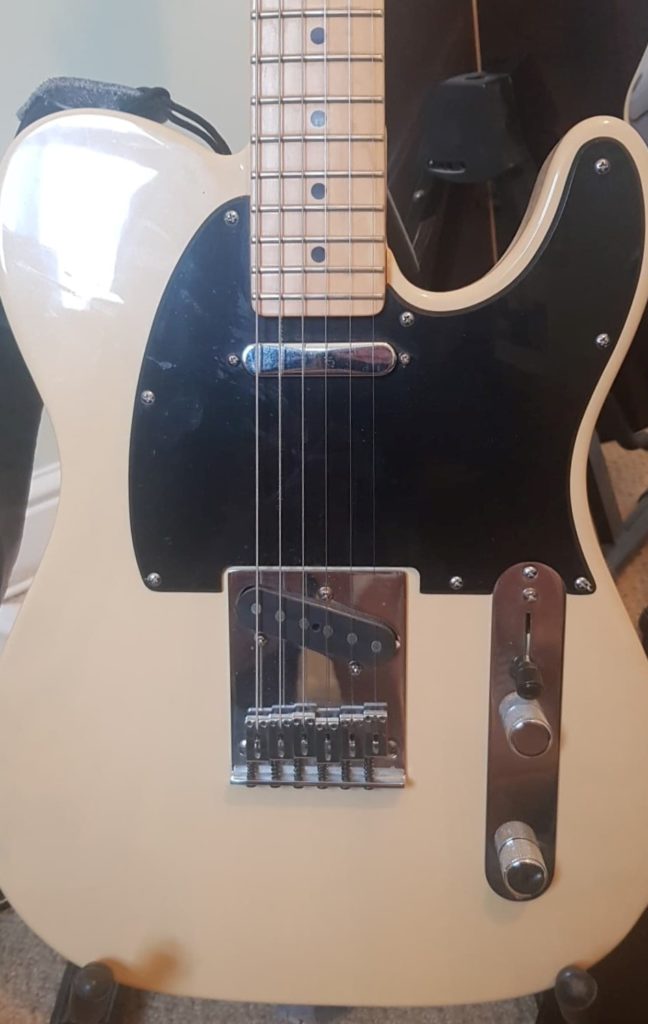
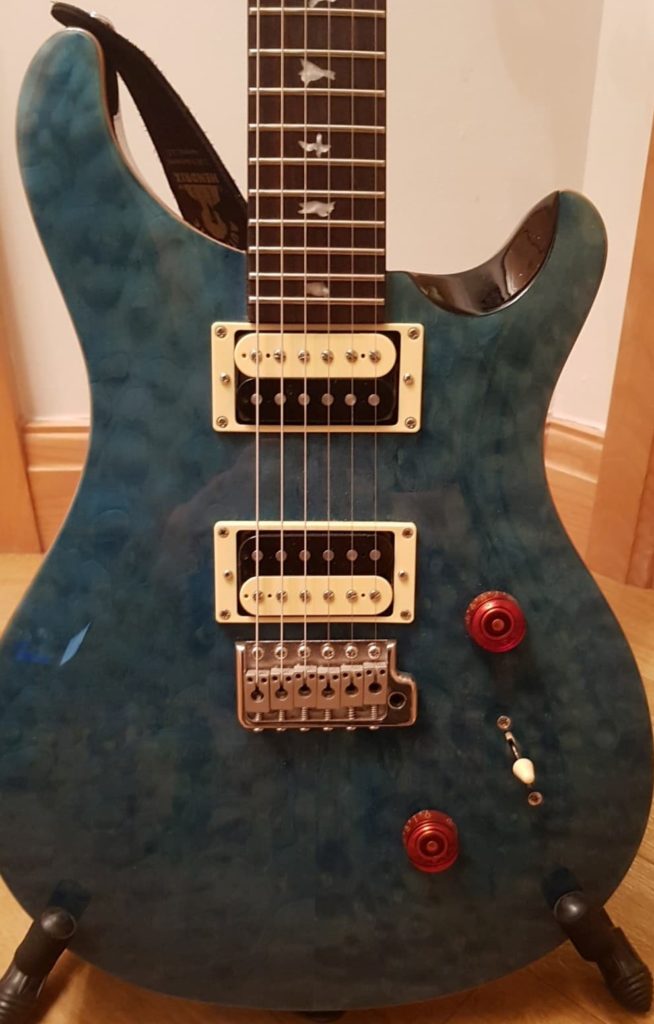
Key Differences
Now we’ve been through an overview of the specs, and the differences in terms of sound, look and feel, I’ll move onto the more specific differences in terms of the anatomy of each electric guitar.
Body
The Fender Telecaster and PRS Custom 24 have very different body shapes. The PRS has a double cutaway design, which makes it easier to reach the higher frets. Whereas, the Tele has a single cutaway.
In terms of body wood, you’ll get a mahogany body with the Custom 24, and usually an alder or ash body on the Fender Telecaster models. Mahogany contributes to a darker and warmer tone, whilst alder and ash add some brightness.
Neck
There are several key differences between the necks of the PRS and Fender Telecaster.
The first difference, is the profile. The deep-C or U-shape of the Fender Tele means it’s thicker than the PRS which has a wide-thin profile.
Usually, thinner necks are described as faster, meaning it’s easier to move around the fretboard quickly. The PRS neck isn’t super thin though, it’s definitely not as thin as something like an Ibanez.
The next difference is in the tone wood. Fender models usually have a maple neck and either a rosewood or maple fretboard. Whereas, PRS Custom 24 guitars have a mahogany neck and rosewood fretboard.
The neck constructions on the two guitars also differs.
PRS Custom 24 guitars use a set-neck construction which gives them more resonance and adds a clean look to the back of the guitar. The Fender Tele has a bolt-on neck construction which is usually cheaper but makes it easier to replace the neck if you damage it. Check out our post on the different neck constructions to learn more about the differences.
Finally, the PRS has 24 frets with bird inlays and the Fender Tele has 22 frets and dot inlays.
Pickups
Now we’ll move onto the pickups. Both guitars use different pickup types from one another. The PRS uses a two humbucker pickup configuration, and the Tele uses a two single-coil pickup configuration.
Single-coils are well-known for producing crisp, twangy and bright tones. The main disadvantage of them, is that you can hear humming when you really crank up the gain. Humbuckers have a warmer and darker tone that doesn’t suffer from this humming issue.
That’s why a lot of guitarists that play heavier music, prefer humbuckers. But those who play country and music with low gain, prefer single-coils. It’s all personal preference though.
The PRS humbucker pickups have a coil split function. This means you can produce single-coil type sounds by simply lifting up the tone control. It’s great if you want some extra versatility. However, the coil split humbuckers usually sound a bit weaker than traditional single coils. Check out our post on coil splitting to find out more.
With both guitars, you have a single tone and volume control and a three-way pickup selector to allow you to use the bridge pickup only, the neck pickup only, and both pickups in combination.
Check out this guide to pickups to learn more about the differences between the two types.
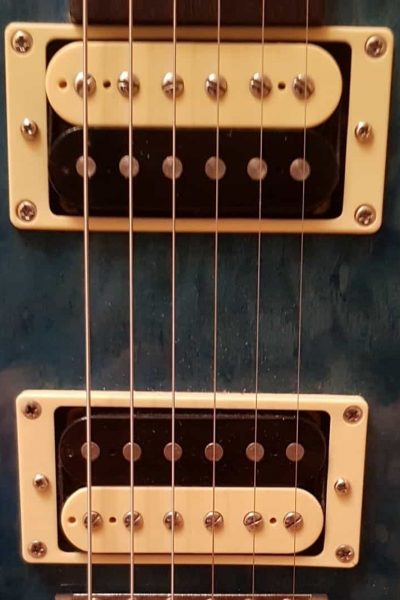
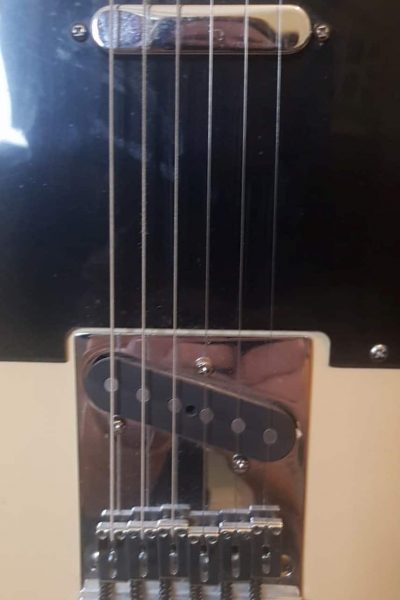
Bridge
The final key difference in the anatomy of the two guitars, is in the bridge. The Fender Telecaster has a fixed bridge. This is great because it’s uncomplicated, has great tuning stability, and makes it easy to change the strings.
The PRS Custom 24 on the other hand, has a floating bridge.
These are more difficult to setup and keep the string in tune, but have an important addition, the tremolo arm (also known as a whammy bar). If you push down, or pull up on the tremolo, you can change the pitch of the strings, adding a unique effect to your playing.
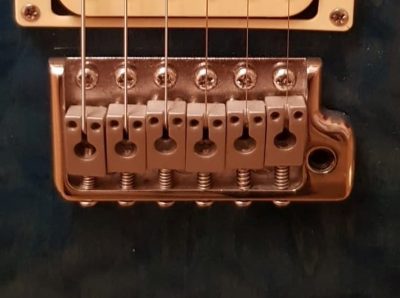
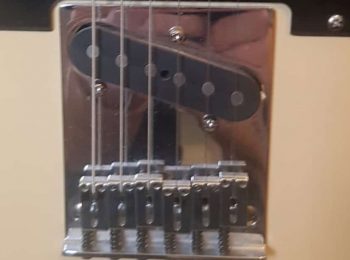
Price and Options
Next, we’ll move onto the different options and prices for each guitar.
We’ll start with the Custom 24. There are two main ranges, the SE line, and the USA core line. The SE (student edition) Custom 24 guitars, are the more affordable option. They are produced in Korea, and have all the main features of the PRS including the tremolo bridge, maple cap and bird-inlays. The USA-core line, is of course made in America and is the high-end option with better quality materials, and craftsmanship.
The Telecaster range is a little more complicated. Fender is the original manufacturer and produces the higher-range guitars. Another company, call Squier produce the entry-level and affordable guitars. Squier is still owned by Fender though so you will get the true essence of the Tele even if you go for the cheaper option.
With the Fender and Squier Tele ranges, you’ll get several different models. That’s where things get a bit more complicated. Here’s a quick rundown of the main lines.
Squier
- The entry level model.
- Affinity: affordable and traditional.
- Standard: the most true to the Fender line.
- Classic Vibe: designed to best emulate iconic Fender guitars.
- Contemporary: a modern twist on the classic guitars.
FENDER
- Player: the most affordable option.
- American Performer: cheapest USA-model
- American Professional: standard USA made model.
- American Ultra/ Elite: more premium USA made options.
- Custom Shop: top of the range.
- Squier Telecasters start at around $180 and go up to around $500. Fender Telecasters start from around $700 and go up to several thousand for a top of the range custom shop. The standard Fender Telecaster which costs roughly $1500.
- PRS SE Custom 24 electric guitars cost around $800 and the USA Core PRS Custom 24 costs around $3500-$4000.
Guitar Center are always the first place I look at when I’m interested in a new electric guitar because have a huge range of models for sale and always have some excellent deals on. Here’s a link to take you directly to Guitar Center’s electric guitar range so you can see all the offers available at the moment.
Frequently Asked Questions
Now you know all about each guitar, here are some FAQs that you may still have.
Which is best for a beginner?
Both the PRS Custom 24 and Fender Telecaster are great guitars for beginners. Although I would way the PRS is a bit easier to play, and has more versatility, I would recommend the Telecaster for a beginner.
This is because the entry-level guitars are much cheaper, so you don’t have to splash out on a premium model to get started playing guitar. The PRS SE line (the cheaper of the two PRS lines) is more intended as an intermediate guitar, so is a great idea if you’re looking to purchase a second guitar.
Which is more versatile?
Which is easiest to play?
Which is Best for metal or hard rock?
Which is best for country?
Which is best for blues?
Rounding Things Off
So hopefully now you feel like an expert when it comes to the differences and similarities between the PRS Custom 24 and Telecaster. If you’re still torn between the two, then go and try them both at a guitar store and see which one you lean towards. Check out this ultimate guide to testing a guitar to make the most of your trip!
Here’s a quick picture showing the pros and cons of each guitar to summarise everything I’ve talked about.
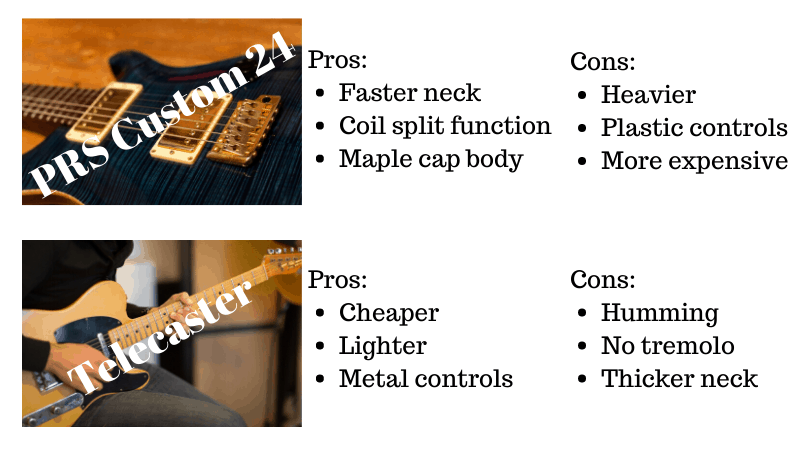
So there you go! There’s the in-depth comparison between the PRS Custom 24 and Fender Telecaster! I hope you’ve found this article helpful, thanks for reading. Here are some other posts you might find useful:
